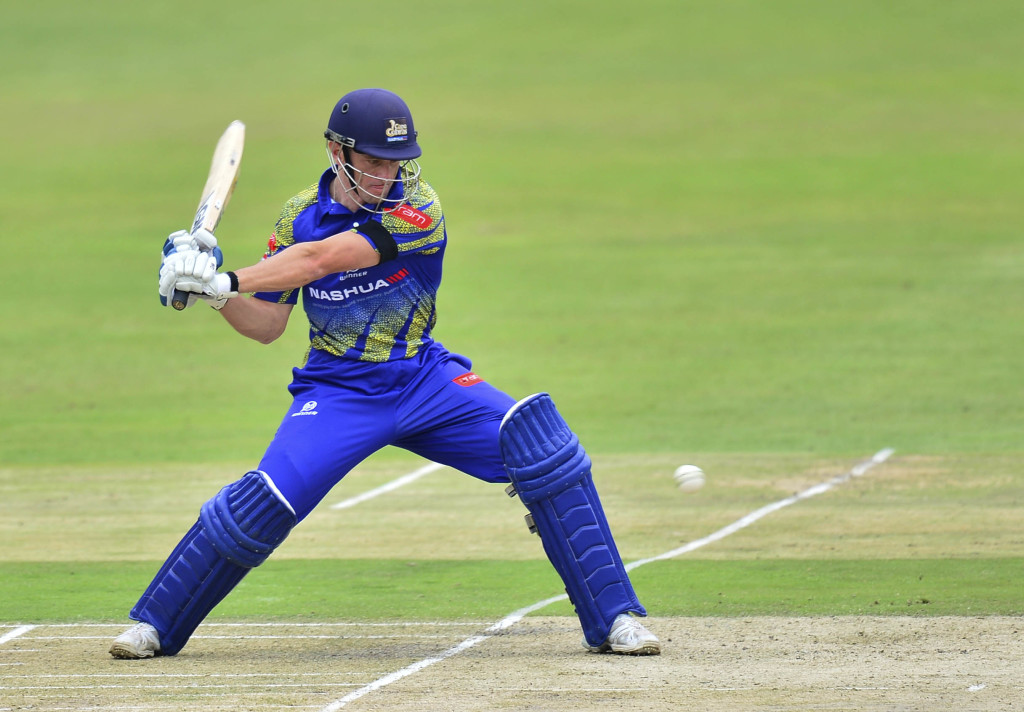The team of the tournament contains some explosive strikers, two wicket-keeping options that double as specialist batsmen and a bowling attack with enough variation and skill to give any batsman a headache. By : Gareth Stevens.
Richard Levi stands tall at the top of the order. He scored more runs than anybody else in the competition, 392, and with a strike rate of 140.00, his runs generally translated into victories for his team.
Chris Gayle had injury concerns once again. However, the big West Indian had an aura when he played, an aura that rubbed off on the rest of his team; his form at the start of the campaign made the Lions early front-runners. He also lit up the competition with the highest individual score, 108 not out, and chipped in with handy off-spin when the conditions demanded.
Henry Davids came into his own after being relieved of the Titans’ captaincy. He was responsible for his sides late-season form and finished as the second highest run-scorer.
Rudi Second was a quiet achiever for the Knights. His work behind the stumps was good enough to leave him unnoticed, always a good sign for a keeper, and he finished as the fourth highest run-getter. The amazing thing is that he never got a really big score, but was incredibly consistent throughout and always played for the cause.
Kieron Pollard, arguably the player of the tournament, was devastating with the bat at the end of the innings, finishing with an average of 81.0 and a colossal strike rate of 171.12. If that wasn’t enough, he was also in joint second place for most wickets answering the call when somebody was needed to do the tough job of bowling at the death.
Dane Vilas is the captain of this side and had a very handy tournament with the bat, despite being pushed up and down the order. He showed his versatility, adapting his batting style to suit the situation, showing he’s always willing to put the team first. His excellent glove work also makes him the first choice wicket-keeper.
Andre Russell makes this team as an opening bowler and a destructive batsmen in the last few overs of the innings. With the bat, he averaged 30.33 with the incredible strike rate of 200.00. With ball in hand he took 13 wickets; although he bowled during the powerplay and at the death, he only conceded 7.38 runs per over.
Shadley van Schalkwyk was one of the finds of the tournament. He finished as the competitions leading wicket-taker, with 15 scalps, showing amazing control over his subtle change of pace. He also managed to keep things tight, going at just 6.58 runs per over.
George Linde was the other find of the tournament. The left-arm spinner who was picked out of obscurity took 14 wickets and travelled at just 6.78 runs per over. He offered the variation that the Cape Cobras attack desperately needed to seal the title.
Eddie Leie proved once again that leg-spinners take wickets, 14, but contradicted the myth that they have to be erratic. He consistently hit an impeccable length and went at only 5.93 runs per over.
Lonwabo Tsotsobe will share the new ball, but provides the variation of a left-armer. He struggles at the death, but would get his overs out the way early in this team. Even without being used in the best possible manner by the Lions, as he had to bowl at the death, he still finished as the joint second highest wicket-taker with 14.
Photo: Backpagepix






